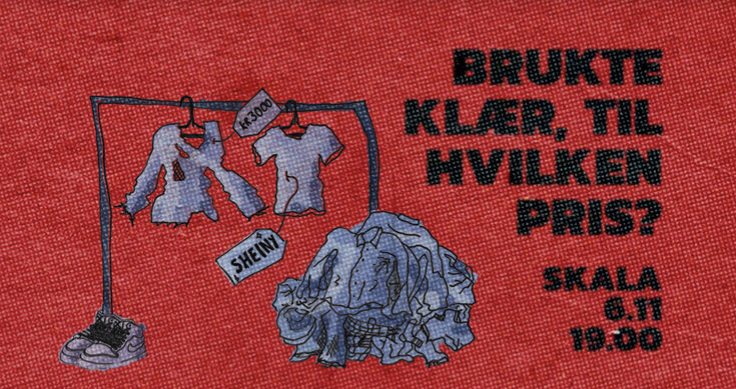Onsdagsdebatt: Brukte klær, til hvilken pris? – Samfundet.no
Debatt
Samfundet, Trondheim
De siste årene har bruktmarkedet fått mye positiv oppmerksomhet. Å handle brukt er bra for både miljøet, lommeboken og sikrer deg unike klær og gjenstander. I hele Norge har bedrifter som Fretex og UFF fått en større tilstedeværelse i handlegater, og på sosiale medier florerer det av påvirkere som taler for å handle brukt framfor å kjøpe nytt. Samtidig har flere av de store kjedene innenfor gjenbruk fått kritikk for å ha høye priser, for å videreselge klær av dårlig kvalitet og det er en skepsis rundt hvor stor andel av klærne som faktisk ender opp i en butikk i forhold til hva som blir sendt til søppelfyllinger.
I lys av dette er det interessant å debattere om bruktmarkedet utelukkende er positivt. Er det egentlig mer miljøvennlig, eller er det overkonsumering i ny forkledning? Bruker vi bruktmarkedet som en unnskyldning for å fortsette kjøpevanene våre? Å handle brukt har for mange vært nødvendig for å få endene til å møtes økonomisk; har bruktmarkedets prisøkning ført til at markedet har blitt mindre tilgjengelig?
Panelet består av:
Frida Nilsen, fremtiden i våre hender
Lisbeth Løvbak Berg, Klesforsker ved OsloMet
Tommy Eriksen, daglig leder i Gjenbruken
Geir Arne Bals, kundeansvarlig Fretex Midt og Nord-Norge
Dørene åpner 18:45, og arrangementet holdes i Skala. Arrangementet er gratis.
Møtet streames på Samfundets YouTube-kanal her (youtube.com). Møtet blir også lastet opp i sin helhet på YouTube-kanalen i etterkant.
